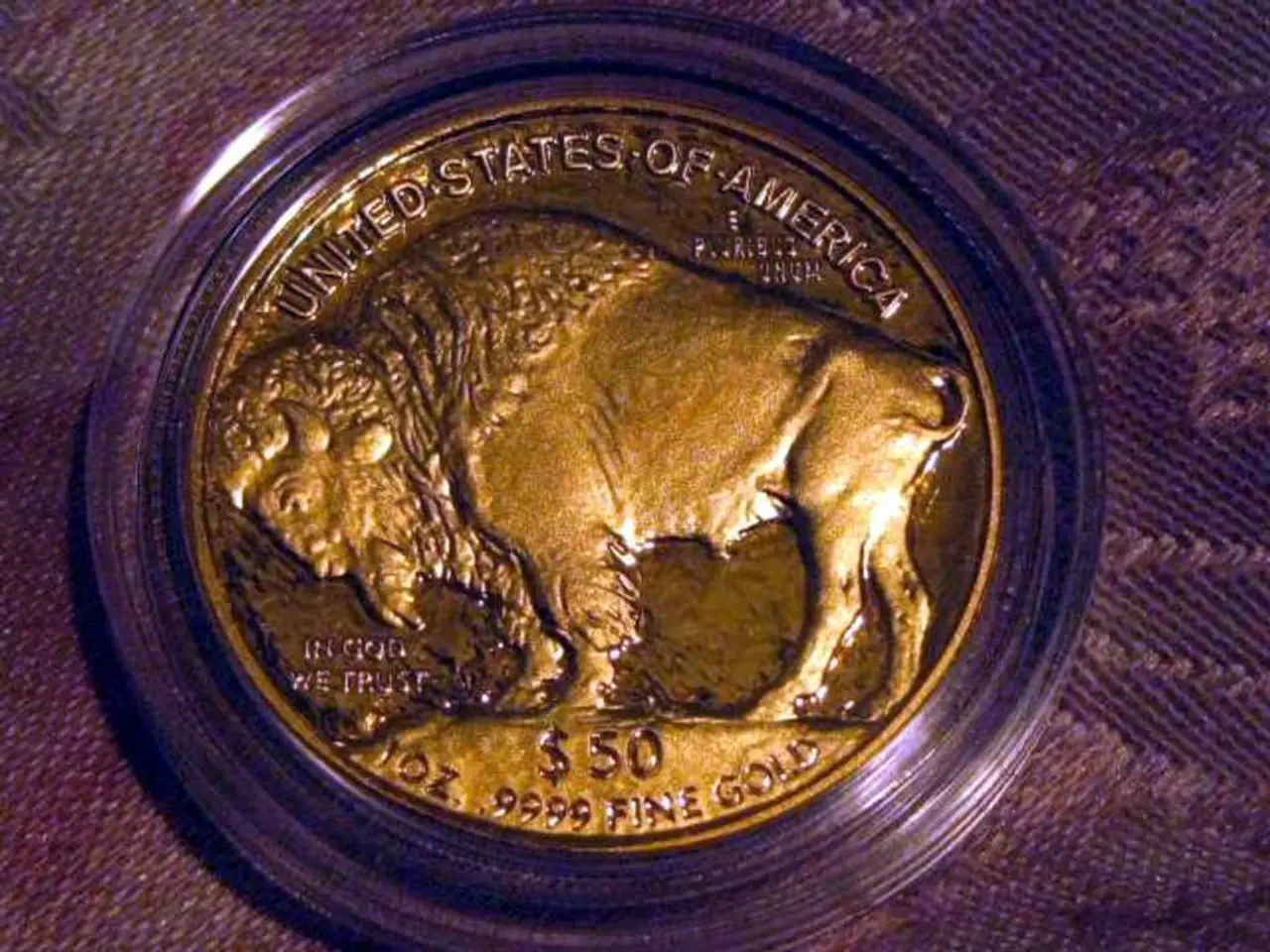Signs indicative of potential trouble ahead for the US currency?
The world of global finance is undergoing a significant transformation, with investors and reserve managers navigating uncertainty as they debate whether the dollar's reign is truly in decline.
Mark Sobel, US chair of OMFIF, cautions against writing off the dollar too quickly, suggesting that short-term market movements are being mistaken for structural change. Jens Søndergaard, a currency analyst at Capital Group, questions whether the US still wants to lead, whether the world still trusts it, and if any serious alternative to the dollar exists.
One potential contender is the Chinese Renminbi (RMB). China's large economy and substantial trade surplus have increased the RMB’s global role since its inclusion in the IMF’s SDR basket in 2016. However, capital controls, limited convertibility, lack of full transparency, and geopolitical tensions restrict its appeal as a neutral reserve currency. The RMB is expected to grow as a reserve particularly in the Global South but is unlikely to replace the dollar soon.
The Euro, the second most widely held reserve currency, is supported by the EU’s economic size and strong central bank. However, the absence of a unified fiscal authority and European bond market limits its reserve currency potential relative to the dollar. Innovations like a “semi-decentralized Euro” involving coordinated bond markets have been proposed to enhance its appeal, but these remain theoretical.
Central banks are also actively exploring digital currencies and CBDCs such as China’s e-CNY and the European Central Bank’s digital euro to reduce reliance on the dollar and improve cross-border payment efficiency. Blockchain and distributed ledger technologies offer potential, with faster, lower-cost settlements that bypass the dollar-based intermediaries.
Proposals for multi-currency systems comprising politically neutral, stable currencies to counter dollar hegemony have also been put forward. The BRICS nations have discussed initiatives like cross-border payment systems and contingent reserve arrangements that could ultimately lead to a BRICS currency hub, though a unified BRICS currency is not imminent.
As a traditional safe haven, gold is seeing increased use by central banks for diversification amid uncertainty around the dollar’s future.
Despite growing skepticism about the dollar’s dominance due to geopolitical tensions, US debt levels, and political volatility, no alternative currently rivals the dollar’s scale and liquidity as the leading global reserve currency.
Resilience is being redefined, and the focus is shifting towards alternatives, but this doesn't mean abandoning the dollar but rather managing the risks around it more deliberately and being prepared for what might come next. Geoffrey Yu, senior EMEA markets strategist at BNY, argues that the dollar will remain the default, and that other currencies will have to earn their higher status.
Jesper Koll, global ambassador and expert director, Monex Group, Japan, argues that a weaker yen, shifting geostrategic dynamics, and a more confident stance from domestic leadership are putting Japan back in the spotlight.
Brics currencies continue to face major constraints, including limited convertibility, shallow markets, and a lack of trust.
47% of reserve managers surveyed by UBS fear a deterioration in the quality and independence of US economic data, and 29% are concerned about potential restrictions to capital market openness. Massimiliano Castelli, head of strategy and advice at UBS Asset Management, highlights these concerns among reserve managers.
Harold James, Claude and Lore Kelly Professor in European Studies at Princeton University, highlights that the current shift mirrors past periods of geopolitical stress, with central banks increasing their gold holdings in search of protection from instability and politically exposed financial assets.
In summary, while the dollar remains predominant given its liquidity, backstop of US economic power, and deep financial markets, ongoing diversification efforts, technological innovation, and geopolitical shifts create a landscape where multiple alternatives—especially the RMB, Euro, digital currencies, and multi-currency arrangements—may play greater roles in the future. Yet, no contender currently matches the dollar's broad global acceptance and functionality as the world's primary reserve currency.
[1] OMFIF Bulletin (2021). The reassessment of allocation strategies due to a shifting perspective on the dollar’s dominance in global finance. [2] Søndergaard, J. (2021). The future of the dollar: A conversation with Jens Søndergaard. Capital Group. [3] Smart, C. (2021). Digital assets as geopolitical risk accelerants: Implications for central banks and reserve managers. Arbroath Group. [4] Hurd, A. (2021). The era of low risks and high returns from unhedged dollar exposure is over. State Street Investment Management. [5] Aziz, Y. and Cheung, T. (2021). Gold as a core reserve asset: Central bank demand and the role of geopolitical risk. Citi.
- Mark Sobel from OMFIF cautions against hastily writing off the dollar, stating that temporary market fluctuations may be misconstrued as structural changes.
- Jens Søndergaard questions if the US still wants to lead, if the world still trusts it, and if any viable alternative to the dollar truly exists, despite its dominance.
- The Chinese Renminbi (RMB) has grown in global importance due to China's large economy and substantial trade surplus, though capital controls, limited convertibility, lack of full transparency, and geopolitical tensions limit its appeal as a neutral reserve currency.
- The Euro, supported by the EU's economic size and strong central bank, faces limitations due to the absence of a unified fiscal authority and European bond market, making it less appealing as a reserve currency relative to the dollar.
- Central banks are actively exploring digital currencies and CBDCs, such as China's e-CNY and the European Central Bank's digital euro, to reduce dependence on the dollar and improve cross-border payment efficiency.
- Proposals for multi-currency systems, comprising politically neutral, stable currencies, have been suggested to counteract the dollar's hegemony, with the BRICS nations discussing these systems, possibly leading to a BRICS currency hub.
- As a traditional safe haven, gold is seeing increased use by central banks for diversification amid uncertainty about the dollar's future, underlining ongoing efforts to manage risks and prepare for potential changes in the global financial landscape.




